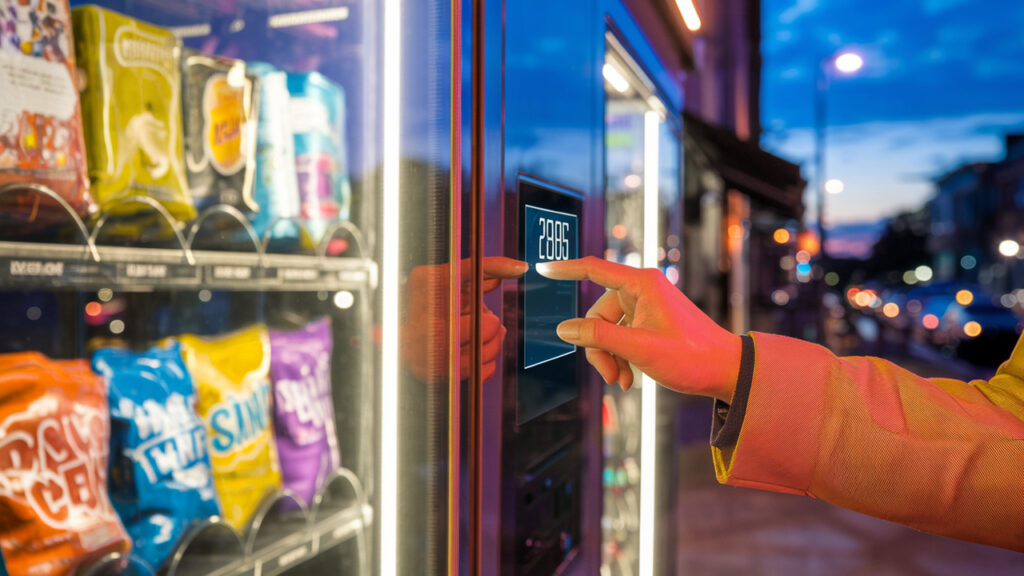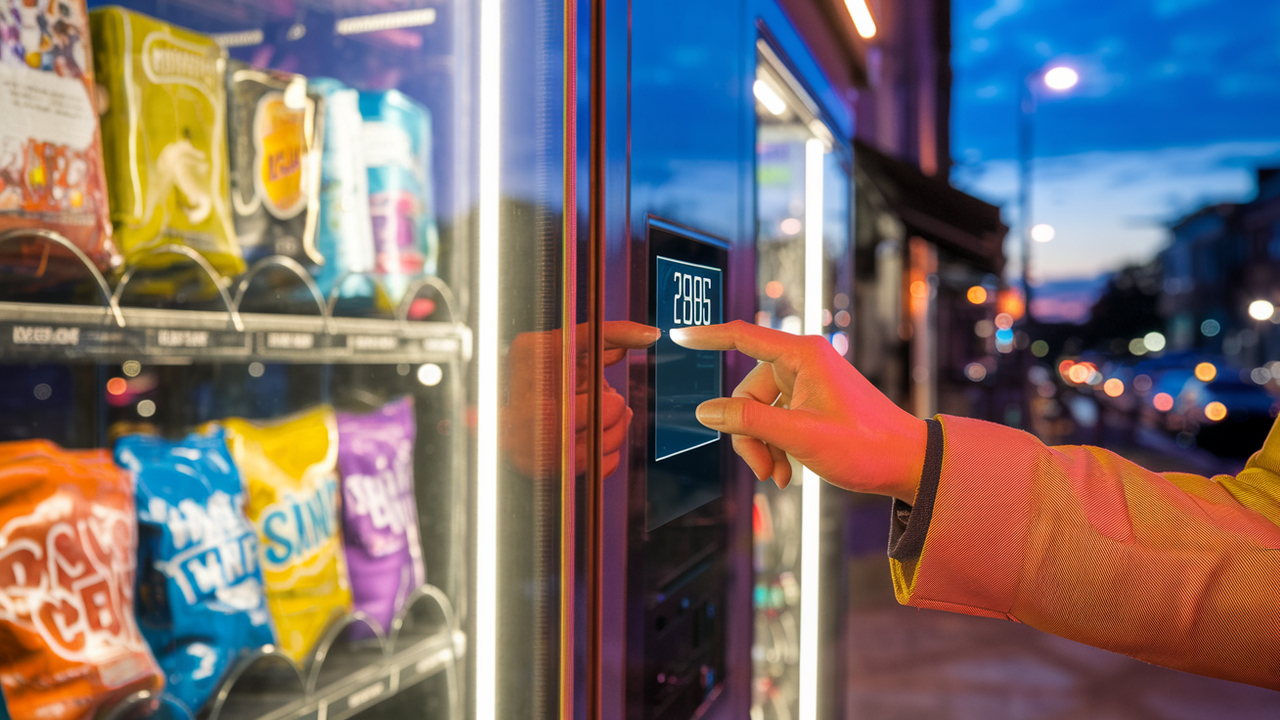How to Set the Right Prices on Your Vending Machine
When I bought my first vending machine, I thought picking the right snacks was the hardest part—but I quickly learned that setting the right prices was even more important. Price your items too high, and people walk away. Too low, and your profits disappear. I had to learn how to find the sweet spot that kept customers happy and made me money.
In this post, I’m going to break down exactly how I price my vending machine products to stay competitive and profitable—whether you’re placing your first machine or growing a whole vending empire.

Table of Contents
Know Your Costs First
Before anything else, you need to know how much each item really costs you. That means:
- Product cost
- Shipping
- Taxes
- Bags or packaging (if you do custom items)
- Any restocking labor costs
I personally aim for a 50% profit margin or better. So if a bottle of water costs me $0.60, I’ll list it for $1.25 or $1.50 depending on the location. This gives me room for card processing fees and leaves a good margin.
Check What Others Are Charging
One of the easiest ways to figure out your pricing is to do a little local recon. I visit other vending machines near mine—inside gyms, laundromats, even barbershops—and I write down what they charge for the same drinks and snacks.
If a can of soda is selling for $1.75 everywhere else, I don’t go lower just to compete. I match it, or I might add something unique (like a less common flavor) to justify my price. Remember: you’re not just selling a product, you’re selling convenience.
Here are the Top 7 Vending Machines for Small Businesses available on Amazon, curated to suit various needs—from snacks and beverages to coffee and combo options:
1. VEVOR Commercial Triple Compartment Candy Vending Machine
- Best For: Small businesses seeking a compact, coin-operated solution for candies and small snacks.
- Features: Three compartments, sturdy iron stand, and coin-operated mechanism.
- Price: Approximately $209.99.
- Link: VEVOR Commercial Vending Machine
2. DIOSTA Coffee Vending Machine with Smart Coin Payment
- Best For: Offices and small businesses desiring a self-service coffee solution.
- Features: Automatic cup drop system, supports three hot drink flavors, coin payment system.
- Price: Approximately $1,099.00.
- Link: DIOSTA Coffee Vending Machine
3. Manovix Refrigerated Beverage Snack Combo Vending Machine
- Best For: Businesses needing a versatile machine for both snacks and beverages.
- Features: 36 slots for snacks and drinks, durable construction, refrigerated compartments.
- Price: Varies based on configuration.
- Link: Manovix Combo Vending Machine
4. Self-Service Coffee Vending Machine with Large Capacity
- Best For: High-traffic areas requiring a robust coffee solution.
- Features: Large water reservoirs, bean containers, waste bins, and automatic cleaning functions.
- Price: Varies based on features.
- Link: Self-Service Coffee Vending Machine
5. Snack Vending Machine with Adjustable Shelves
- Best For: Businesses focusing solely on snack offerings.
- Features: Multiple product storage, vertically adjustable shelves, free vend mode.
- Price: Varies based on configuration.
- Link: Snack Vending Machine
6. Mahavir 4-in-1 Girnar Fully Automatic Coffee & Tea Vending Machine
- Best For: Businesses wanting to offer both coffee and tea options.
- Features: Dispenses up to 3 cups per minute, supports multiple premix flavors, no plumbing required.
- Price: Varies based on configuration.
- Link: Mahavir 4-in-1 Vending Machine
7. Smart Self-Serve Commercial Automatic Coffee Vending Machine
- Best For: Modern workspaces seeking a sleek coffee solution.
- Features: Adjustable grind settings, touchscreen interface, suitable for various coffee types.
- Price: Varies based on features.
- Link: Smart Self-Serve Coffee Vending Machine
Note: Prices and availability are subject to change. It’s advisable to check the latest details on Amazon before making a purchase.
Location Changes Everything
You’ve got to price based on your location demographics. A vending machine in a corporate office can handle higher pricing than one in a public school. When I placed a machine in a medical center, I was able to charge up to $2.50 for Gatorade—and people paid without blinking. In a lower-income area, I keep prices lean to drive volume.
If you’re not sure yet, test a few price points and check your sales reports. That data never lies.
Use Psychological Pricing Tricks
Pricing something at $1.99 instead of $2.00 really does work. It’s called “charm pricing,” and it tricks the brain into thinking it’s cheaper. I use it all the time, especially for best-sellers like chips or cookies.
You can also highlight deals like “2 for $3.00” on screen if your machine supports combos. Customers feel like they’re saving—and you sell more product per transaction.
Bundle for Bigger Profits
Another trick I use is bundling. For example, I’ll offer a bottle of water and a granola bar together for $3.50, even though separately they’d cost $4. It encourages people to buy more without them feeling like they’re spending more. If your machine allows it, program these combos—they work.
Monitor and Adjust
Your job isn’t done after you set prices. You need to track what sells, what doesn’t, and how fast. If something is flying off the shelf, you may have room to increase the price slightly. If something is sitting for weeks, drop the price by $0.25 or swap it out.
I check my machine analytics weekly to keep pricing sharp and sales flowing.
Account for Card Fees
If you’ve added a card reader (which I highly recommend), keep in mind that every swipe comes with a fee. That’s usually around 5-10 cents per transaction. I bake that into my pricing. Instead of $1.25, I’ll go $1.35. It’s a small change, but it adds up.
And yes, people will still pay. The convenience of tapping to pay outweighs a few cents every time.
Dynamic Pricing is the Future
If you’re using a smart vending machine (like many on Amazon), you might have the option to change prices remotely. Some machines even support dynamic pricing based on time of day or inventory.
For example: I raise prices on energy drinks by $0.50 during late-night hours when people really need them. It’s fully automated, and it works.
Ask for Feedback
Sometimes I ask regular customers directly: “Do you think the prices are fair?” You’d be surprised—people are happy to tell you what they’d pay. I’ve adjusted pricing up or down based on honest feedback, and it’s helped sales long-term.
You can even leave a small sign or QR code on your machine asking for suggestions.
Final Thoughts
Setting the right prices isn’t a one-time job—it’s an ongoing process. You need to stay flexible, track your data, listen to customer habits, and adjust when needed. But once you get it right, your vending machine becomes a passive profit center that works while you sleep.
If you want help choosing the best smart vending machine or need a template to track your vending costs and profits, stay tuned to SnackMint.com—I’ll be uploading resources and guides just for you.

